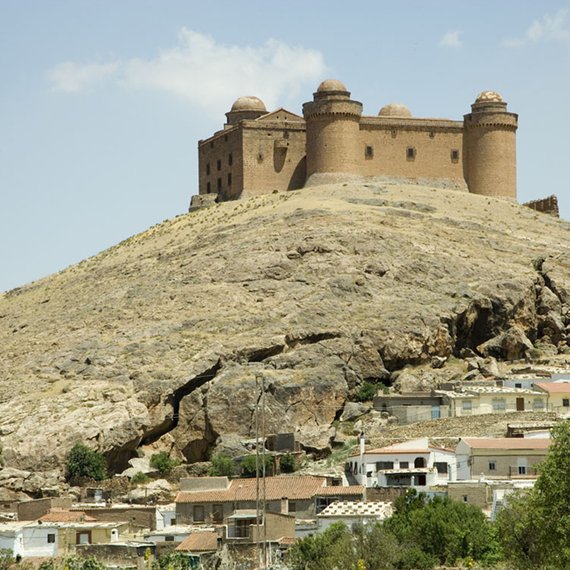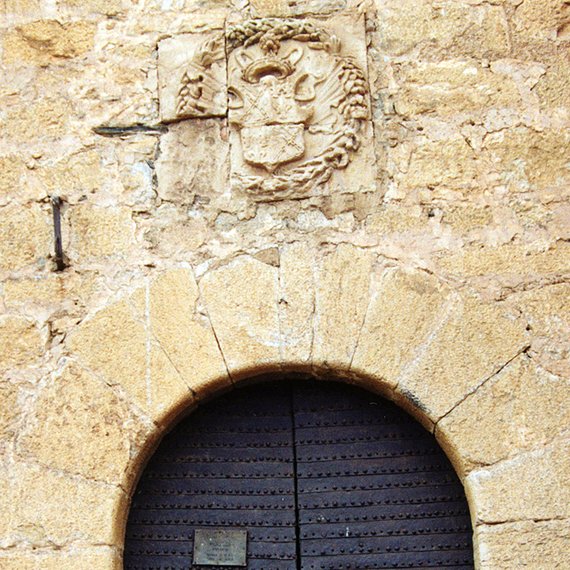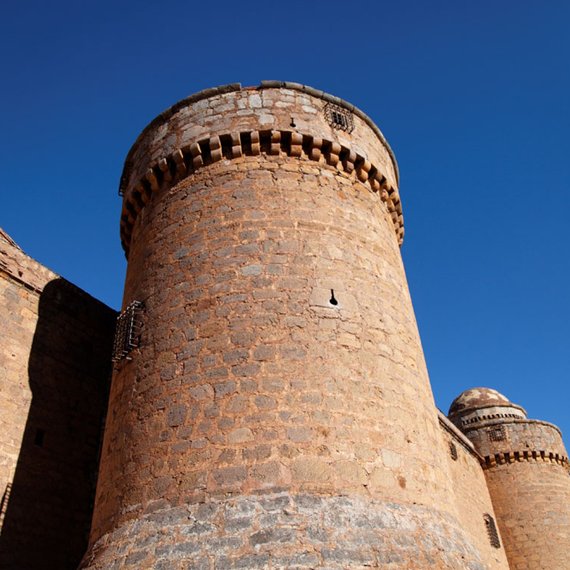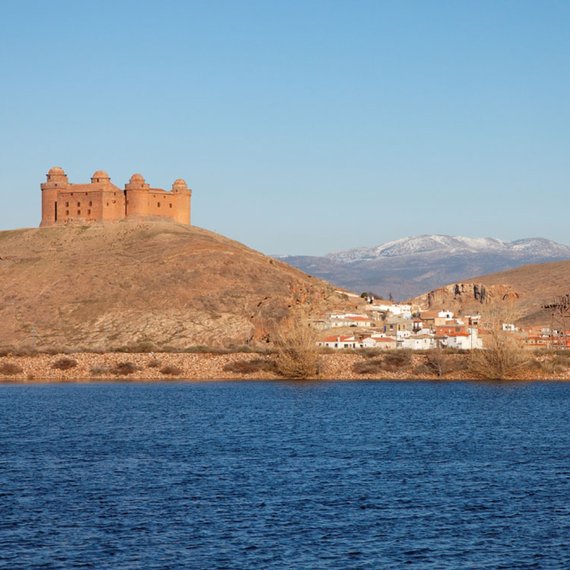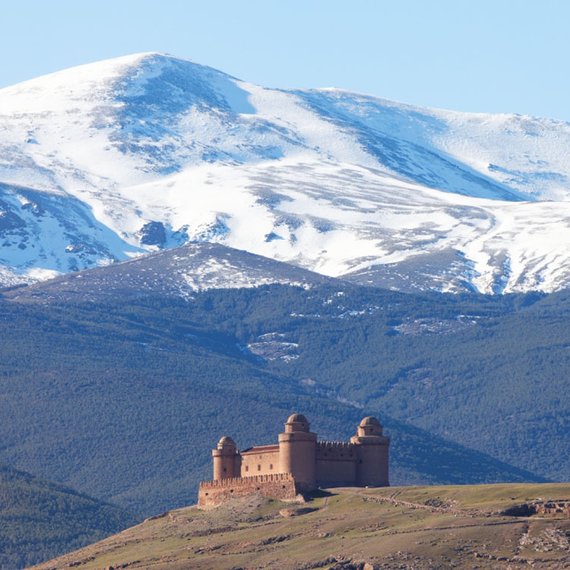

Built on the only hill that at the foot of the Sierra Nevada dominates the extensive plain of the Marquesado del Zenete, the castle-palace of La Calahorra constituted a revolution in the Spanish architecture of its time, being the first work built in the Iberian Peninsula in the Renaissance
This style was already prevailing in Italy at that time and marked the abandonment of the Gothic aesthetic prevailing in almost all of Europe. It was built in just three years, between 1509 and 1512.
Its exterior shows a rectangular building, flanked at each of its angles by four cylindrical towers topped by domes. The massive and austere exterior contrasts, however, with its magnificent and elegant interior patio Renaissance two-story building, with a double gallery of delicate arches, beautiful Carrara marble balustrades and a cloister staircase of great artistic value. The spacious interior rooms are covered with various coffered ceilings.
Declared a national monument, it currently belongs to the House of the Duke of Infantado and is in an incomprehensible state of abandonment. Although it is privately owned, its interior can be visited, not without difficulty, requesting it in advance from a manager that the owners have in La Calahorra.
El espectacular conjunto que suman el castillo y su entorno ha atraído a la industria del cine y la televisión, que lo ha utilizado como escenario de producciones como 'El viento y el león' (protagonizada por Sean Connery), 'La casa del dragón' (precuela de 'Juego de Tronos') y 'Assassin's creed'. En los alrededores también se filmaron escenas de 'Doctor Zhivago' y 'El bueno, el feo y el malo'.
